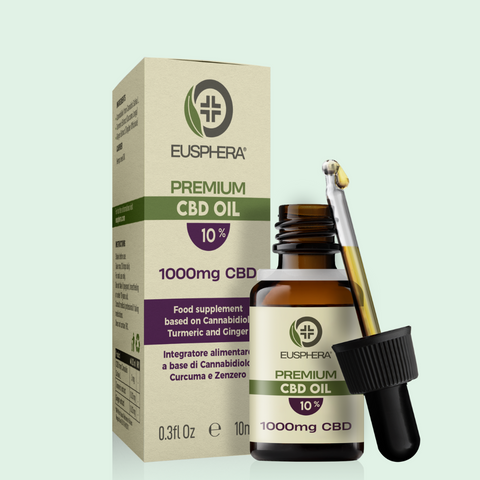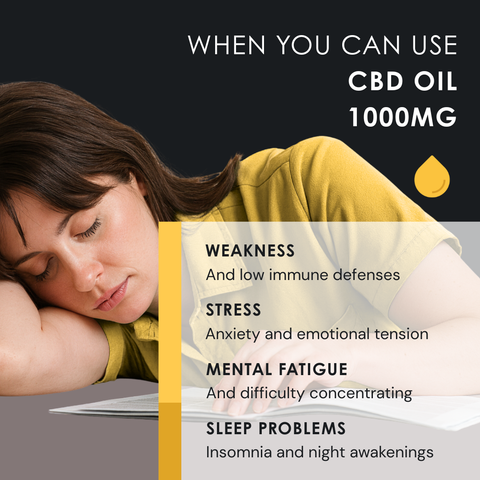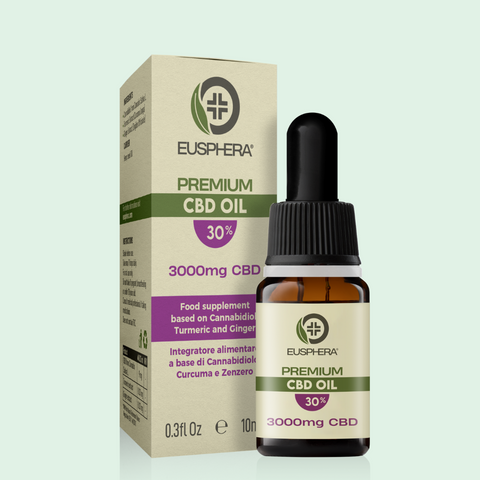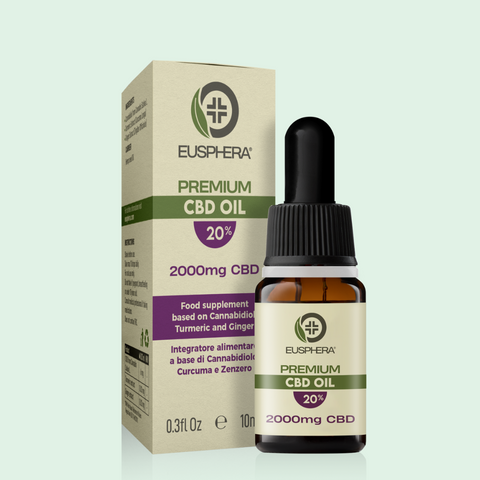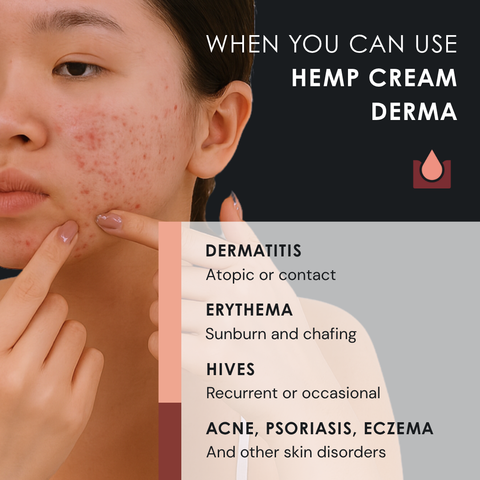A well-regulated nervous system allows mind and body to easily find their balance. In this process, the GABA receptors (gamma-aminobutyric acid) play a fundamental role. These proteins help calm the nervous system, promote relaxation, and ensure good sleep quality. When this “brake” functions harmoniously, arousal decreases and neural circuits remain stable.
What happens, instead, when it becomes less effective? Agitation, tension, and sleep fragmentation increase. This is where interest arises in molecules and strategies capable of supporting GABAergic mechanisms: among the most studied compounds in neurobiology is cannabidiol (CBD), investigated for its interaction with specific GABA receptors and related pathways.
What Are GABA Receptors?
To understand the role of GABA, it is useful to start from the basics—defining GABA receptors: membrane proteins that recognize the chemical signal leading to a reduction in neuronal excitability, thereby stabilizing brain networks.
GABA receptors differ in structure and timing of action, working together to ensure rapid inhibition and, when needed, more prolonged effects. In the medical literature, three major families are identified: ionotropic GABA-A receptors, metabotropic GABA-B receptors, and the receptors historically called GABA-C (now reclassified within the GABA-A-ρ family).
The Role of GABA: The Main Neurotransmitter That Calms the Brain
At the synaptic level, GABA binding opens chloride channels or activates G protein–coupled pathways, hyperpolarizing the membrane and reducing the release of other mediators. It is the “physiological brake” that maintains homeostasis between glutamatergic excitation and inhibition, with effects on stress management, sleep consolidation, and motor control.
Types of GABA receptors
● GABA-A: Ion channel, rapid effect on relaxation and anxiety
GABA-A receptors are pentameric ion channels permeable to chloride; they produce responses within milliseconds and are the target of many clinically used positive allosteric modulators (for example, benzodiazepines and some “Z-drugs”). Recent structural studies have defined binding sites at the interfaces between subunits, clarifying why different subtypes are associated with distinct clinical profiles (hypnosis, anxiolysis, muscle relaxation).
● GABA-B: G protein–coupled receptor, slow and long-lasting modulation of neuronal activity.
The GABA-B receptor is coupled to Gi/o proteins: it inhibits adenylate cyclase, modulates potassium and calcium channels, and reduces neurotransmitter release. The responses are slower but longer-lasting, affecting muscle tone control and both pre- and postsynaptic circuits.
● GABA-C: Specific role in the central nervous system.
The “GABA-C” category is now recognized as GABA-A-ρ receptors, pharmacologically distinct and strongly expressed in the retina, where they contribute to visual signal definition and directional selectivity.
Why GABA Receptors Are Important for the Body and Mind
In everyday life, these mechanisms influence how the brain filters stimuli, manages stress, supports sleep, and coordinates movement.
● Control of brain activity: GABAergic inhibition balances excitation, preventing overexcitation and circuit instability; it is essential for the precision of neural signaling.
● Influence on anxiety, stress, and sleep: adequate GABA tone facilitates relaxation and falling asleep. Its reduction is associated with hyperarousal, evening restlessness, and insomnia. It is no surprise that effective sleep hygiene strategies also rely on “lowering the noise” of neural circuits.
● Role in neurological and psychiatric disorders: alterations in GABA receptors or GABAergic transmission appear in epilepsy, spasms, anxiety, and depression. Many therapies work precisely because they strengthen this inhibitory pathway.
CBD and GABA Receptors: How They Interact
Having clarified the role of the GABAergic system, it becomes relevant to consider how certain compounds can modulate these circuits. CBD is among the most studied—not because it “does everything,” but because it shows a polypharmacology that involves GABA-A receptors, serotonergic 5-HT1A receptors, and TRPV1 channels, all connected to the regulation of anxiety, stress, and seizure threshold.
The clinical picture is still evolving, but the experimental foundations are already solid.
● Enhancing the calming effect of GABA-A (rapid modulation)
In electrophysiological models, CBD acts as a positive allosteric modulator of GABA-A: it increases the current evoked by low concentrations of GABA and reduces its EC50 without altering Emax. Similar effects have been reported for various combinations of human subunits expressed in Xenopus oocytes, with preferences that may explain functional differences. Evidence from human tissue indicates that CBD can also modulate GABAergic neurotransmission ex vivo.
● Indirect modulation of GABA-B (prolonged relaxation)
There is no evidence of a direct binding of CBD to GABA-B; however, by modulating excitability and the release of mediators through other targets, the compound may influence “downstream” circuits regulated over time by GABA-B (muscle tone, antispasticity).
● Influence on other receptors
Numerous studies indicate interactions of CBD with the 5-HT1A receptor (involved in anxiety and mood tone) and with TRPV1 channels (pain, stress). A recent hypothesis suggests that part of its anxiolytic effects may also depend on desensitization of the 5-HT1A signal, while TRPV1 modulation contributes to regulating excitability.
Human studies vary widely in dosage, duration, and populations. Therefore, any therapeutic assessment requires medical advice and compliance with current regulations.
How CBD and GABA Can Improve Health
The practical value of CBD emerges when it is integrated into an overall wellness approach that includes healthy habits and, when necessary, professional support.
● Reduction of anxiety and stress: enhancing GABA-A–mediated inhibition can promote more stable emotional responses. Preclinical data and recent reviews support a possible contribution of CBD, also through 5-HT1A and TRPV1 pathways.
● Improvement of sleep: effective GABA tone facilitates falling asleep and maintaining restful sleep. In practice, consistent routines, morning light exposure, and limiting caffeine and evening screen time remain essential. For evening support not based on CBD, EU4SLEEP Capsules [VG1] are available. Follow the directions for use, and in case of ongoing therapies or specific conditions, seek advice from a doctor or pharmacist.
● Muscle relaxation and spasms: GABAergic circuits, especially through GABA-B, are involved in muscle tone control. In this area as well, any pharmacological strategies require individual evaluation.
● Support in neurological and mood disorders: since GABAergic inhibition is implicated in epilepsy, anxiety, and depression, GABA receptors remain key therapeutic targets. The hypothesis that CBD may contribute, in selected contexts, through modulation of multiple pathways (including the excitation/inhibition balance), is the subject of ongoing studies.
